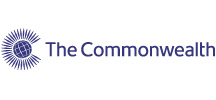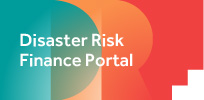Search New
Explore Funding
Filters
Filter your search by checking and unchecking the boxes below.
Before or After the disaster?
Own or Transfer the risk?
Instrument type?
Instruments Available
The ADB Contingent Financing Grant is a grant made available upon a soft trigger (for instance, declaration of state of emergency) with a disbursement-linked repayment schedule.
The ADB Contingent Financing Loan is a loan made available upon a soft trigger (for instance, declaration of state of emergency) with a disbursement-linked repayment schedule.
The African Disaster Risk Financing Programme(ADRiFi) supports eligible countries to access risk transfer services through premium support for parametric weather insurance offered by African Risk Capacity. Between 2019 and 2023, ADRiFi will support premium financing: until the 4th year of participation, a country will receive premium support of up to 50% of the country’s annual premium, and from the 5th year onward, countries will be in a better position to fully finance their premiums from their national budgets and maintain sustained domestic resource allocation for insurance premium. ARC insurance allows for pay-outs being disbursed automatically when pre-defined risk thresholds are exceeded.
Long term nature grants provided to fragile states that include rehabilitation and reconstruction operations that aim to repair the damage caused by natural or man-made disasters. For instance, repairs and reconstruction of damaged infrastructure and equipment, assistance in the revival of economic activities and social services, rehabilitation or reconstruction of roads, bridges, water and sewerage systems, schools, hospitals, or industrial and agricultural complexes. The focus is to bring economic and social infrastructures back to pre-disaster levels. These operations would also include preparedness activities that enable a country to forestall or prepare itself to better withstand emergency situations.
Emergency funds provided by the African Disaster Risk Financing Programme (ADRiFi), a programme that aims to enhance the resilience and response to climate shocks in African countries.
In its capacity as a regional risk pool, the African Risk Capacity (ARC) allows participating countries to pool their country-specific risk into a single, better diversified portfolio, which results in a substantial reduction of premium costs. ARC is a Specialized Agency of the African Union established to help African governments improve their capacities to better plan, prepare, and respond to extreme weather events and natural disasters.
ARC Replica is a parametric (index) insurance product offered by ARC Ltd to World Food Program and other humanitarian partners as an approach to expand climate risk insurance coverage to more people and improve the effectiveness of emergency humanitarian response. ARC Replica Coverage allows UN agencies and other humanitarian actors to match ARC country insurance policies. By matching country policies, international resources would be used more cost-effectively through participation in ARC’s government-led risk management system while doubling the coverage of climate risk insurance. Humanitarian agencies would purchase replica insurance policies, thus doubling the level of coverage in each participating country.
The first multi-country risk pool and regional catastrophe fund, Caribbean Catastrophe Risk Insurance Facility (CCRIF) provides parametric insurance, which disburses funds based on the occurrence of a predefined level of hazard and impact.
Contingent Emergency Response Component (CERC) of a World Bank project is a contingent financing tool that allows for quick disbursement of uncommitted balances from existing IPFs in the event of a crisis or emergency. The CERC is prepared as a project component during the original project’s preparation (pre-planning) and activated without needing to restructure the original project. Many Bank-financed projects already have a CERC, although these can be added to existing projects for an imminent or actual emergency (such as COVID-19). Most CERCs are set up as zero-component, that is, no funding is earmarked to this component in the project. CERCs allow funds to be redirected from other parts of the project to cover emergency response needs as long as those expenditures are eligible under the project.
Standard IADB contingent loan linked to a disaster.
Standardized decentralized institutional structure that provides a revolutionary solution for the most efficient transfer of insurable risks from the governments to the international financial markets. Through it, each participant country will be able to:
• Mitigate the financial impact of natural disaster events.
• Strengthen growth stability in their economies by transferring the risk to the international insurance and capital markets.
• Obtain efficient financial coverage of extraordinary public expenditures during emergencies immediately after a catastrophic disaster.
Longer term for serious medium-term balance of payments problems because of structural weaknesses that require time to address, the IMF can assist with the adjustment process under an Extended Fund Facility (EFF).
The Flexible Credit Line (FCL) was designed to meet the demand for crisis-prevention and crisis-mitigation lending for countries with very strong policy frameworks and track records in economic performance. This instrument was created as part of the process of reforming how the IMF lends money to countries that find themselves in a cash crunch, with the idea of tailoring its lending instruments to the diverse needs and circumstances of member countries. While none of these countries have so far drawn down on these lines, the FCL provides a valuable backstop and helps boost market confidence during the period of heightened risks.
The global financial crisis highlighted the need for effective global financial safety nets to help countries cope with adverse shocks. A key objective of recent lending reforms was to complement the traditional crisis resolution role of the IMF with more effective tools for crisis prevention. The Precautionary and Liquidity Line (PLL) is designed to flexibly meet the liquidity needs of member countries with sound economic fundamentals but with some limited remaining vulnerabilities which preclude them from using the Flexible Credit Line (FCL).
Provide longer-term financing to strengthen economic resilience and sustainability by (i) supporting policy reforms that reduce macro-critical risks associated with climate change and pandemic preparedness, and (ii) augmenting policy space and financial buffers to mitigate the risks arising from such longer-term structural challenges.
The new SBA framework has expanded the range of high access precautionary arrangements (HAPAs), a type of insurance facility against very large potential financing needs. Precautionary arrangements are used when countries do not intend to draw on approved amounts, but retain the option to do so should they need it. In an economic crisis, countries often need financing to help them overcome their balance of payments problems. Since its creation in June 1952, the IMF’s Stand-By Arrangement (SBA) has been used time and again by member countries, and it is the IMF’s workhorse lending instrument for emerging and advanced market countries. The SBA was upgraded in 2009 along with the Fund’s broader toolkit to be more flexible and responsive to member countries’ needs. Conditions were streamlined and simplified, and more funds were made available up front. The new framework also enables broader high-access borrowing on a precautionary basis.
JICA’s contingent loan linked to a disaster.
Pacific Catastrophe Risk Insurance Company (PCRIC)
Established under the World Bank Pacific Catastrophe Risk Assessment and Financing Initiative (PCRAFI), PCRIC provides a market based sovereign risk insurance to Pacific Island Countries. The Company also provide technical assistance to Pacific Island Countries (PICs) on disaster risk modeling and assessment. More broadly, the company advises PICs on integrated financial solutions for the reduction of their financial vulnerability to natural disasters.
Risk-linked security instrument designed to mobilize money in case of a catastrophe such as a hurricane or earthquake. If the bond issuer suffers a loss from a particular pre-defined catastrophe, such as a hurricane or earthquake, their obligation to pay interest and/or repay the principal is either deferred or completely forgiven.
A contingent financing instrument (grant or loan) that provides immediate liquidity following a natural disaster. Funds become available for disbursement after the declaration of a state of emergency due to a natural disaster. Country must have a disaster risk management program in place, which the Bank will monitor on a periodic basis.
GRiF is a multi-donor trust fund (MDTF) managed and implemented by the World Bank, with initial contributions from the governments of Germany and the UK. GRiF provides grants imbedded as part of World Bank projects to pilot and scale up financial solutions that help countries be financial prepared to respond to climate shocks, disasters, and crises. World Bank projects with GRiF funds are already underway in a number of Commonwealth countries: Malawi, Mozambique, Sierra Leone, and Jamaica.

